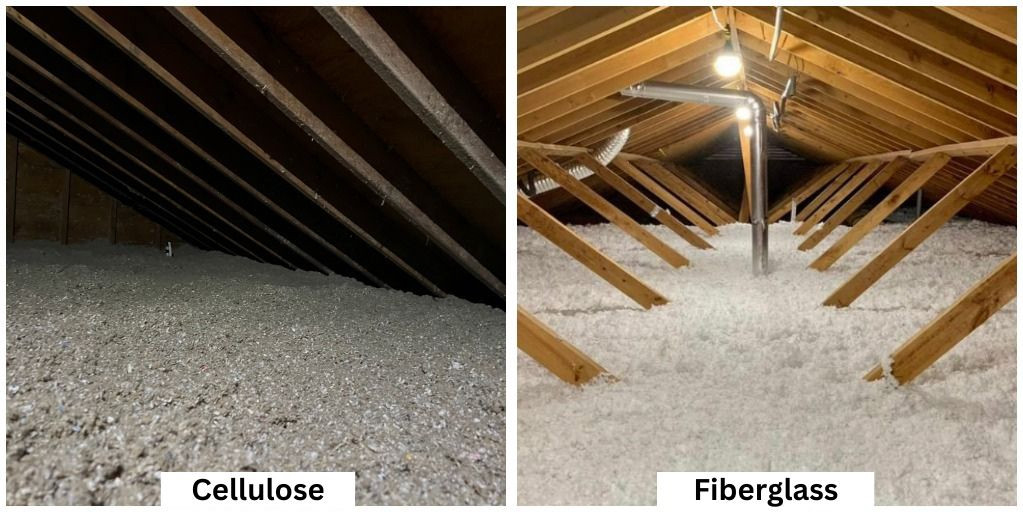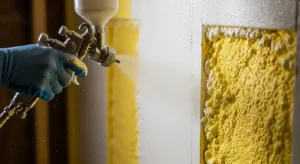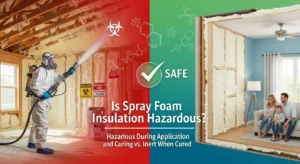Are you struggling to choose the best insulation for your home? With so many options, finding the right fit can be overwhelming. Among the top choices, fiberglass insulation NYC and cellulose insulation NYC stand out, each offering unique benefits. But which one is better for your needs?
In this guide, we’ll break down the key differences between fiberglass insulation and cellulose insulation, helping you make an informed decision.
Composition and Materials
The composition of insulation materials is a fundamental factor in their performance and environmental impact.
- Fiberglass insulation is crafted from fine glass fibers, giving it a lightweight yet robust structure. This material is often manufactured in batts, rolls, or loose-fill forms, making it versatile for various applications. Its composition ensures durability and resistance to wear and tear over time, making it a popular choice for homeowners.
- Cellulose insulation, in contrast, is primarily made from recycled paper products. These materials are treated with fire retardants like borates, enhancing their safety. Being composed of up to 85% recycled content, cellulose insulation is a go-to option for eco-conscious individuals. Its biodegradable nature adds to its sustainability, making it a greener alternative to fiberglass.
Thermal Performance
One of the most critical factors in choosing insulation is its thermal efficiency, which directly impacts your home’s energy savings.
- Fiberglass insulation is known for its decent thermal performance, as it traps air within its fibers, reducing heat transfer. However, air leakage can sometimes reduce its effectiveness, particularly in older installations or improperly sealed spaces.
- Cellulose insulation, thanks to its dense structure, often outperforms fiberglass in preventing heat loss. Its compact fibers fill gaps and crevices more effectively, minimizing air leakage and providing superior thermal insulation. This means lower energy bills and more consistent indoor temperatures throughout the year.
Read More: How Insulation Can Improve Your HVAC System’s Efficiency
Installation Process
The ease of installation plays a big role in determining the overall cost and suitability of insulation for your project.
- Fiberglass insulation is typically sold in pre-cut batts or rolls, which makes it easier to handle during installation. This format works well for large, open areas like attics or between wall studs. However, it’s essential to install fiberglass properly to avoid gaps that can reduce its efficiency.
- Cellulose insulation is usually installed as loose-fill material, which is blown into spaces using specialized equipment. This method provides excellent coverage for irregularly shaped areas or hard-to-reach corners, ensuring a snug fit. However, the process often requires professional expertise, adding to the installation cost.
Moisture Resistance
Moisture resistance is another factor that sets these two insulation types apart.
- Fiberglass insulation naturally resists moisture and does not absorb water easily. This property makes it less likely to develop mold or mildew, which can compromise your home’s air quality and structural integrity.
- Cellulose insulation, while treated to resist fire and pests, can absorb moisture if exposed to water leaks or high humidity. This can lead to clumping, sagging, or even mold growth over time. Proper installation and moisture barriers are crucial to prevent such issues.
Environmental Impact
For environmentally conscious homeowners, the sustainability of the insulation material is a key consideration.
- Fiberglass insulation, while recyclable, requires a more energy-intensive manufacturing process. Its production involves melting glass at high temperatures, which contributes to greenhouse gas emissions. However, advancements in technology are gradually improving its sustainability.
- Cellulose insulation stands out as an eco-friendly option due to its high recycled content. The production process also consumes less energy compared to fiberglass, reducing its carbon footprint. Additionally, its biodegradable nature means it has minimal impact on landfills at the end of its life cycle.
Cost Considerations
The cost of insulation is often a deciding factor for many homeowners, but it’s essential to consider both upfront costs and long-term savings.
- Fiberglass insulation is generally more affordable than cellulose, making it a budget-friendly option for many projects. Its availability in pre-cut formats also reduces labor costs during installation.
- Cellulose insulation, on the other hand, tends to have a higher initial cost due to its professional installation requirements. However, its superior thermal performance can result in significant energy savings over time, offsetting the higher upfront investment.
Need Help Choosing the Right Insulation?
Choosing the right insulation is crucial for your home’s energy efficiency and comfort. At Air Seal Insulation, we specialize in providing top-quality insulation installations tailored to your needs. Whether you prefer fiberglass or cellulose insulation, we ensure expert installation for maximum performance.
Make the right choice for your home—-contact us today to schedule your free consultation!




